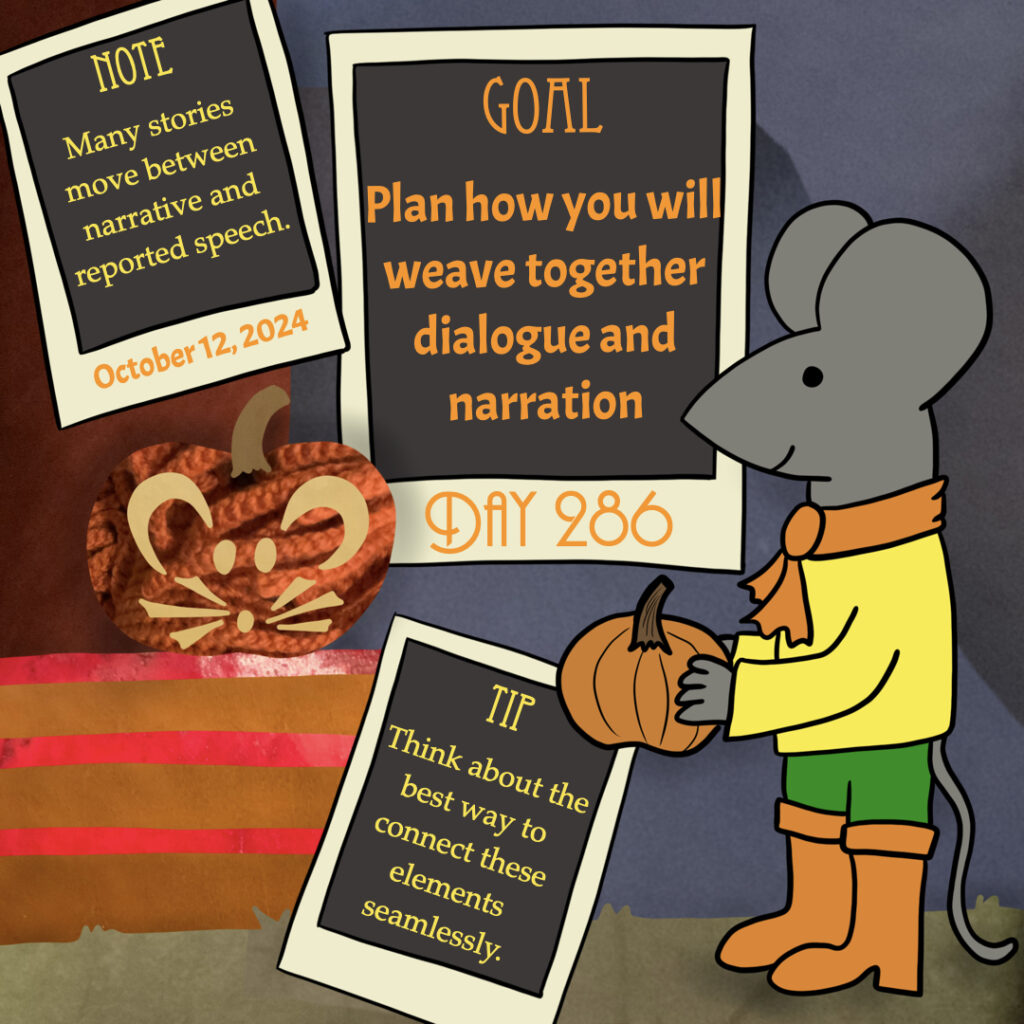
Goal: Plan how you will weave together dialogue and narration
Note: Many stories move between narrative and reported speech.
Tip: Think about the best way to connect these elements seamlessly.
Work focus: Organize/Plan/Structure
Telling stories (whether they are spoken or written) often involves movement from background prose and narration into instances of dialogue and then back again. Consider how you want stories to flow as your speakers integrate dialogue with narration. It may be as simple as stringing together clauses, some of which describe situations and some of which report speech. Just having a quotative structure might be enough of a signal for distinguishing dialogue from narration in your language.
However, you may also consider developing a larger formulaic structure for stories, where perhaps key words or phrases are used to signal that an upcoming clause is narration to provide background context. A formulaic storytelling structure might also include particular grammatical patterns or features of repetition, where elements of the story are fronted in a clause structure or repeated across clauses.
If you’re not sure what you want to do, you might use today to look at oral stories shared in a variety of languages to get an idea of how stories can be structured before deciding if you want to develop planned formulaic strategies or want stories to be a bit more free-flowing.
